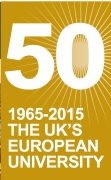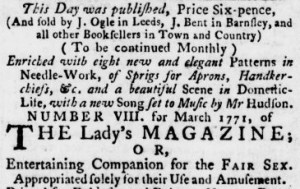 Working at the University of Kent has many advantages. Our colleagues are great, our students contribute enthusiastically to the vibrancy of the academic community, and our hillside campus provides beautiful views on Canterbury and its Cathedral spires (when it’s not too foggy). What I like most about the University, however, is its international orientation. It styles itself ‘the UK’s European university’ and justifies this appellation by organizing acclaimed student programmes in Brussels and Paris, and by stimulating collaboration with institutions in Continental Europe and Scandinavia. It is a source of great satisfaction to me that my current department has an excellent understanding with my former, at Ghent University. On Friday 30 October, for instance, a delegation of Kent staff and students will visit Ghent for a jointly organized workshop on nineteenth-century periodical studies, where our guest speaker will be living legend Prof. em. Laurel Brake. Earlier this month, I visited the Norwegian University for Science and Technology (NTNU) in Trondheim, to talk about our project to our friends of Enlightenment News.
Working at the University of Kent has many advantages. Our colleagues are great, our students contribute enthusiastically to the vibrancy of the academic community, and our hillside campus provides beautiful views on Canterbury and its Cathedral spires (when it’s not too foggy). What I like most about the University, however, is its international orientation. It styles itself ‘the UK’s European university’ and justifies this appellation by organizing acclaimed student programmes in Brussels and Paris, and by stimulating collaboration with institutions in Continental Europe and Scandinavia. It is a source of great satisfaction to me that my current department has an excellent understanding with my former, at Ghent University. On Friday 30 October, for instance, a delegation of Kent staff and students will visit Ghent for a jointly organized workshop on nineteenth-century periodical studies, where our guest speaker will be living legend Prof. em. Laurel Brake. Earlier this month, I visited the Norwegian University for Science and Technology (NTNU) in Trondheim, to talk about our project to our friends of Enlightenment News.
After my presentation, the Enlightenment News team gave feedback on our project’s most ambitious output, the annotated index for the magazine that will be available in open access as of September 2016. They confirmed the effectivity and efficiency of the index and gave advice on the use of state-of-the-art tools for the visualization of extrapolated data. You will get to see the results of our conversations in the next months. Their splendid ideas on Digital Humanities notwithstanding; the researchers on Enlightenment News are especially valuable contacts for the Lady’s Magazine project because of their specific expertise on eighteenth-century newspapers. During our discussions I noticed that they knew much more about magazines than I know about newspapers, but that neither side felt entirely confident on the genre that it did not focus on. The Enlightenment News website also states that this project ‘springs from the mass digitization of newspapers and periodical publications’ [my emphasis].
The distinction made there is widespread in the study of eighteenth-century print culture, and I certainly understand why the Trondheim researchers decided to uphold it. Nevertheless, it struck me that this may be another one of those institutionalized imaginary boundaries that sometimes bring about an unhelpful compartmentalization of scholarship. Although some scholars are active in both, there are arguably still distinct academic circuits for the study of periodicals as either an offshoot of literary studies, or as a discipline within media history. Essay periodicals and magazines have been getting increasing attention over the past few decades from literature scholars working within periodical studies because these genres are now acknowledged as important sites of literary publication and public debate, but apart from a few notable trailblazers (including Enlightenment News), scholars outside of media and history departments have been paying little attention to newspapers except as easily quotable sources of historical information.
Newspapers are ‘serial publications with [their] own distinctive titles’,[i] to cite one definition of ‘periodicals’, but they are often represented as incommensurable with periodical genres like the essay periodical, magazine, journal, review publication or miscellany. There are at least two explanations for this. Between 1712 and 1855, so-called ‘Taxes on Knowledge’ were in force in Britain to curtail publications that focused on current events, and this consolidated the classification of newspapers as a genre of publication apart from others with a periodical frequency. Today, for practical reasons, most libraries in North America and Europe index newspapers separately from (other) periodicals because the internationally accepted bibliographical classification system MARC 21 (Machine Readable Cataloguing) does so too. There is however no absolute necessity to do so, and I am sure that most periodical scholars would not object to the classification of newspapers as part of the wider category of periodicals.
After pondering this problem, I became convinced that I need to learn more about those publications that are traditionally categorized as newspapers. The awkward phrasing of that last sentence is intentional. Genre categories are demarcated by means of definitions, and this is necessary because the corresponding terms have functioned historically and need to be taken into account, but we need to remember that these are all inevitably reductive. Achieving some kind of Linnaean taxonomy of textual genre should never be our goal. Whichever genre you tend to work on, it is advisable to occassionally take a peek over the fence at the neighbours. Especially in the eighteenth century, when the press is still coming into its own, self-classification is a matter of commercial pragmatics and legal opportunism, and many publications blurred the differences between genres on purpose. It is fair to say that such clever manipulation of genre is the very raison d’être of magazines.

LM, XXI (Jan. 1790): 49. Image © Adam Matthew Digital / British Library. Not to be reproduced without permission.
The defining feature of a newspaper is that it contains mostly ‘news’, a slippery term usually understood as denoting a concise record of current events. The Lady’s Magazine, for instance, also contains news sections in every number, divided into the subsections ‘Home News’ and ‘Foreign News’. The monthly frequency of the Lady’s Magazine makes it less adequate than the usually daily or weekly newspapers for ‘professional’ readers who needed to keep up with the most recent political and commercial developments, but for a less exigent audience that was not yet reliant on the then increasing centralization of government and globalization of commerce, it probably did the job just fine. Additionally, readers who preserved their copies and had them bound into annual volumes could use these sections as a chronicle of the past year. When we give talks about the Lady’s Magazine, we are often asked where it got its news facts from (in the jargon: ‘newsgathering’), but this is a difficult question as there may well be dozens of sources for every single number. As I have discussed before, ‘news’ was unprotected by copyright law and, even more generally than other content, harvested from sundry other publications, although the leading newspapers of course had channels of their own to secure scoops. More apt questions may be what the principles were whereby the Lady’s Magazine selected some events for inclusion and omitted others, and what the ideological slant of its reports tended to be. The Lady’s Magazine is also unlikely to have gathered itself all of its monthly notices for births, marriages and deaths, another feature which it shared with newspapers.
Besides these more obvious overlaps with newspapers, the Lady’s Magazine also contained surprisingly detailed court proceedings for the most sensational cases of its day, like the trial of the Monster. It also printed the entire defence speech of Lord Erskine on behalf of Thomas Paine during the latter’s trial for seditious libel in 1792, in which the Magazine’s publisher George Robinson was implicated. Its regular articles on official celebrations at court could be seen as ticking off yet another topical interest, even if the emphasis there usually was on the dresses worn by the Queen and her ladies. Vice versa, many publications that are categorized as newspapers included types of content that we now more readily associate with (other) periodical genres, such as book reviews, historical items that at first glance bear no immediate relevance to topical events, original poetry, and occasionally serialization of prose fiction.
Also if your research is limited mainly or solely to the magazine genre, there are clear advantages to a more thorough consultation of newspapers than a quick search for keywords in online databases. To give only one example, ephemeral materials such as advertisement sections are often better preserved for newspapers than for magazines, because they are usually fully integrated into the paper’s contents and therefore harder to purge from the text. The Lady’s Magazine regularly advertised in the major newspapers of the day, and reading these adverts – ideally in context of the paper in which they appear – can tell you much about how the magazine was marketed. Reading them successively may tell you which price changes it underwent throughout its run, and how the publishers believed they could present themselves most profitably. The advert partially reproduced here is actually much longer, and contains valuable descriptions of the contents that indicate which items were expected to attract most attention.
I came back from Trondheim with a renewed interest in newspapers as points of comparison to, and secondary sources of information on the Lady’s Magazine, and for that I am as grateful as for the warm welcome I received. As previous blogs posts have shown, presentations at other institutions where Jennie, Jenny and myself have been hosted have stimulated our research in other ways. If you work on topics congenial to our own, and think that it would be useful for us to present our project to you and hear about yours in turn, we urge you to get in touch. We welcome all suggestions wholeheartedly and are keen to gain new contacts wherever people are interested in our research!
Dr. Koenraad Claes
School of English, University of Kent
[i] Reitz, Joan M. “Periodical”. Online Dictionary for Library and Information Science. http://www.abc-clio.com/ODLIS/odlis_P.aspx?#periodical [last consulted on 20 Oct. 15]

